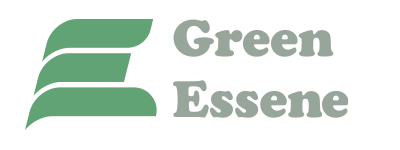Good Products in Bad Packaging: Part 2 – Serving Product Packaging Problems
 Another poor choice of packaging is the one used by single serving products. Single serving products like yogurt for instance are usually packaged in plastic cup or bucket like containers which are a bit of a nightmare to recycle. Why so?
Another poor choice of packaging is the one used by single serving products. Single serving products like yogurt for instance are usually packaged in plastic cup or bucket like containers which are a bit of a nightmare to recycle. Why so?
The problem with single serving product packaging: When it comes to effective recycling, size and material of packaging is essential, and single serving products usually score poorly in both respects. In recycling it’s a rule of thumb that the smaller the package, and the more materials it contains, the harder it is to recycle effectively. Single serving food containers like yogurt, or coffee cups and others such may appear a sleek and effective packaging solution they are not. Even though such products are in fact packaged in completely recyclable plastic containers they are a problem to recycle due to a number of reasons. First of all usually such packaging is very small in size and volume, being smaller in size and volume makes them harder to wrangle (part of recycling process) which in turn makes them very unpopular with the recycling industry. In many cases, the plastic packaging itself is made of plastic or plastic-like materials which are a problem to recycle due to their chemical or physical properties. Another issue is contamination (from a recycling perspective) – usually single serving food and drink containers are tainted with food or beverage, which makes the recycling process harder and more expensive as materials have to be washed or otherwise sanitised before further processing.
The culprits: Perhaps the biggest offenders when it comes to the size and material rule are packaging of single serving foods particularly yogurts but most of all plastic coffee cups. In the yogurt case, producers across the board are in violation of the basic packaging and recycling rules, regardless of whether they are a diary giant or a small local operation.
 Plausible solutions: Probably the most realistic solution to this particular packaging-recycling problem is advances in actual plastic waste separation and processing technology at point of recycling, or maybe use of more sustainable polymers in packaging. One or two of the large single serving food companies have made notable efforts to use ecofriendly plastic packaging. On the consumer end, it is always about making wiser choices, some of the established coffee shop chains are actually pushing customers toward use of reusable coffee and tea mugs. Supermarket chains who demonstrate certain awareness to the issue of single serving food packaging are moving toward compostable, bio degradable product packaging – this manufacturing technology can be effectively applied to both plastic and paper product packaging. However this is mostly being done in the United States for now. Buying in bulk and transportation of products in reusable (washable) packaging is also an option, though this could prove quite challenging for most consumers.
Plausible solutions: Probably the most realistic solution to this particular packaging-recycling problem is advances in actual plastic waste separation and processing technology at point of recycling, or maybe use of more sustainable polymers in packaging. One or two of the large single serving food companies have made notable efforts to use ecofriendly plastic packaging. On the consumer end, it is always about making wiser choices, some of the established coffee shop chains are actually pushing customers toward use of reusable coffee and tea mugs. Supermarket chains who demonstrate certain awareness to the issue of single serving food packaging are moving toward compostable, bio degradable product packaging – this manufacturing technology can be effectively applied to both plastic and paper product packaging. However this is mostly being done in the United States for now. Buying in bulk and transportation of products in reusable (washable) packaging is also an option, though this could prove quite challenging for most consumers.
Toothpaste tube and toothbrushes as small as they are in size, are a big problem to recycle. The small size of the tube, the fact that there is usually some little amount of toothpaste left in it, and because some tubes contain both plastic and metal foil layers (blended material) make recycling of such packaging basically impossible. The case with toothbrushes is similar – their small size and the fact that they usually contain plastic, nylon and rubber in some cases make them a real problem to recycle properly. Unfortunately, the largest manufacturers of toothpaste and toothbrushes still work with non recyclable products and packaging. These large companies are aware of the facts, and some of them are making an effort to change the way products are manufactured and packaged through working together with environmental organisations.
